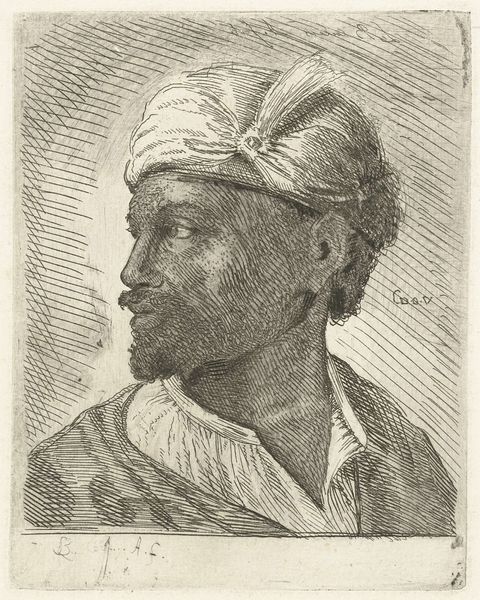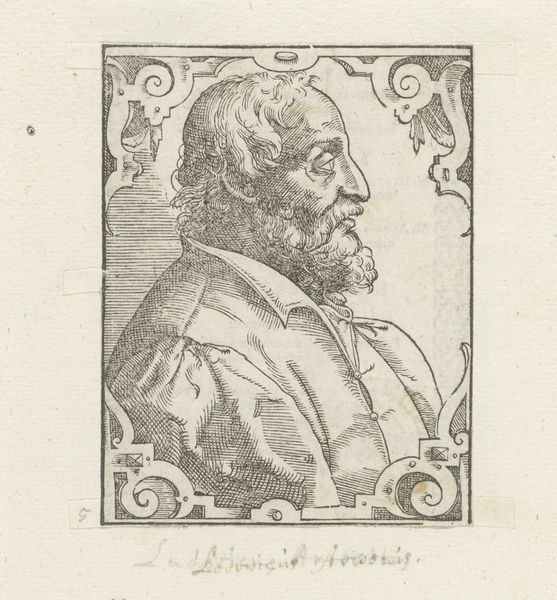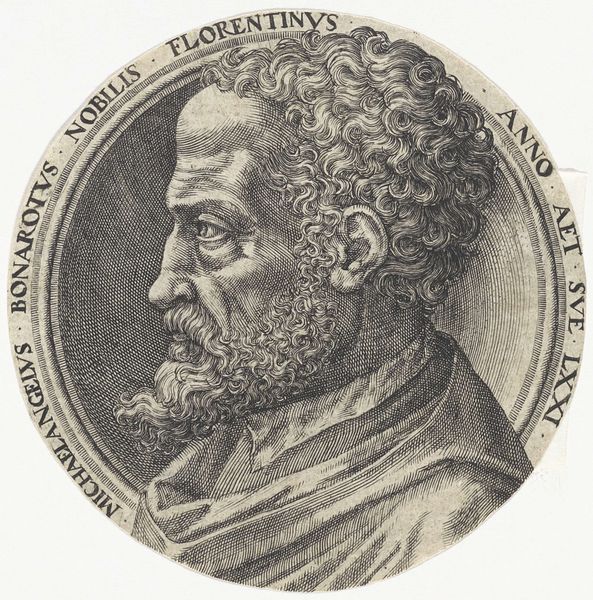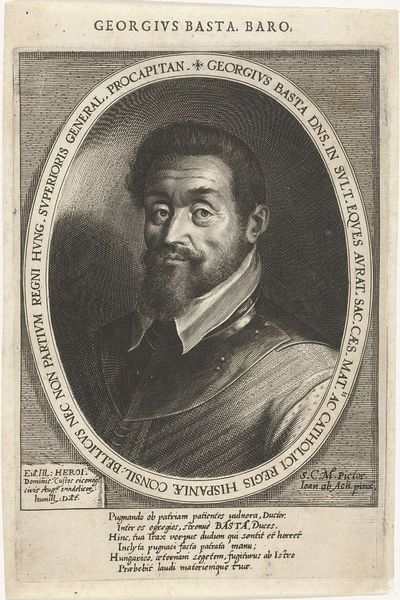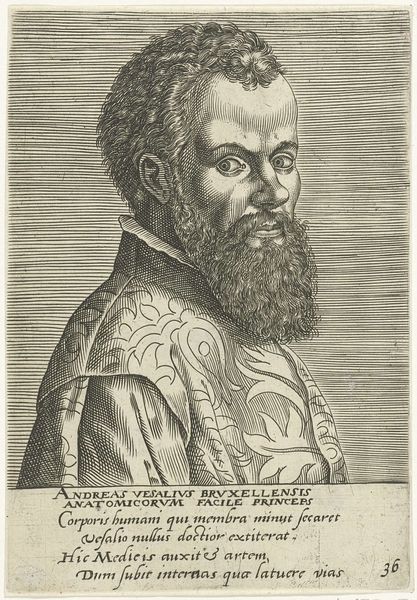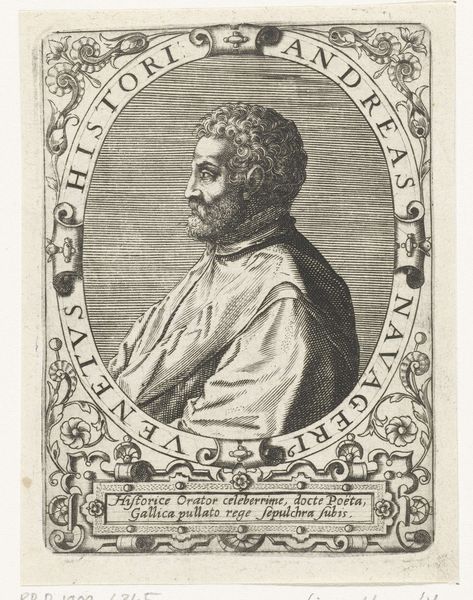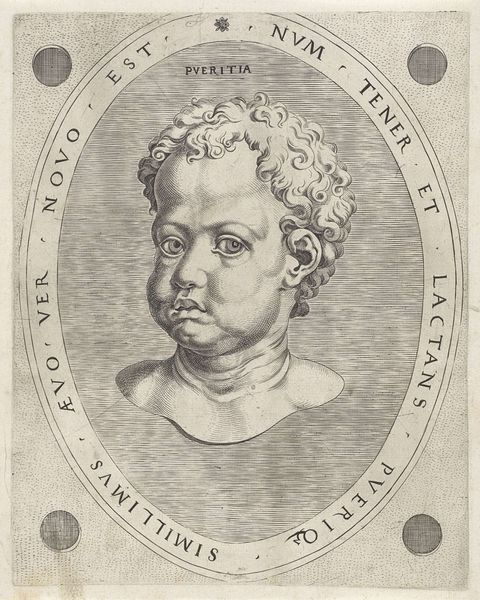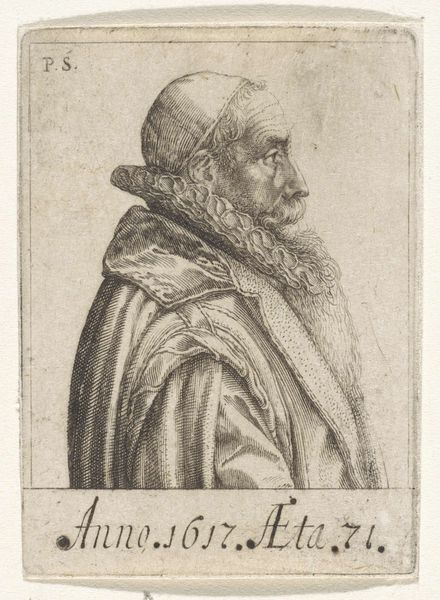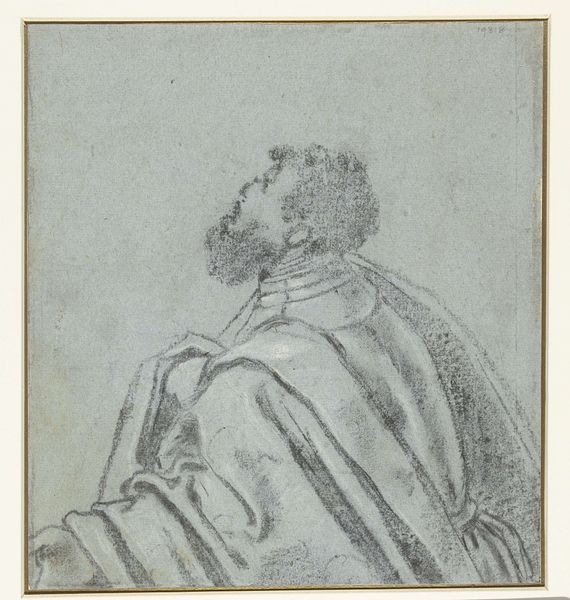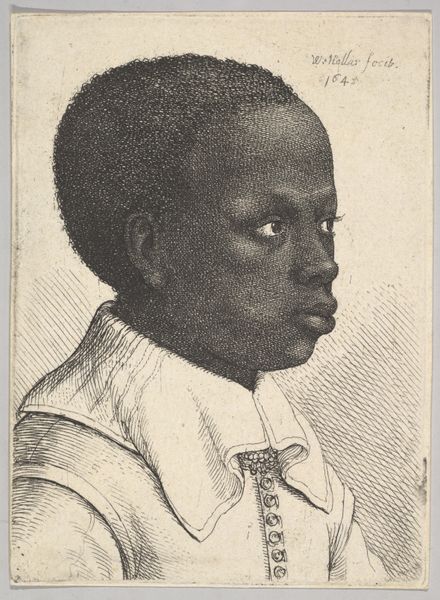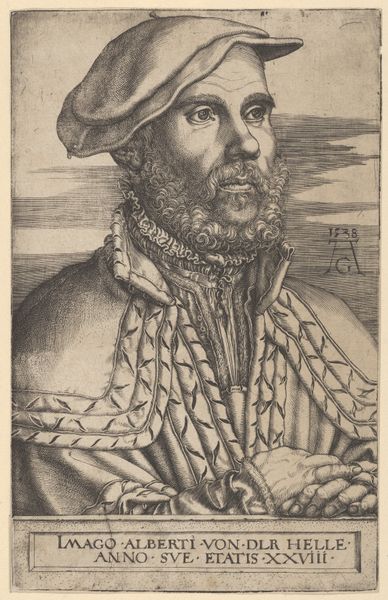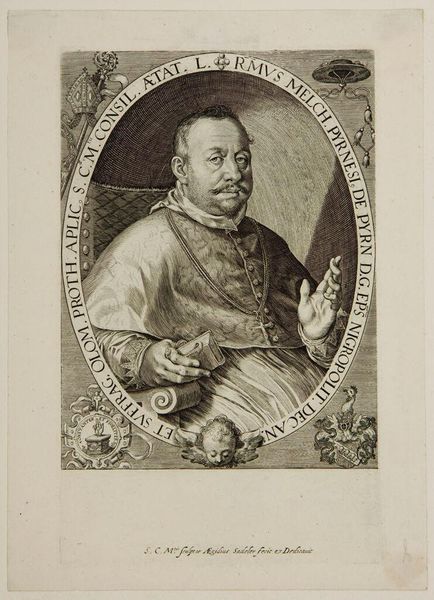
Dimensions: height 138 mm, width 110 mm
Copyright: Rijks Museum: Open Domain
Curator: So, we're looking at a piece titled "Portret van een Abessiniër," or "Portrait of an Abyssinian," an engraving that historians place around the late 18th century. It's attributed to Louis Bernard Coclers. Editor: My initial gut reaction? Curiosity. I find myself immediately drawn into the subject’s gaze. He's not looking *at* us, more like, through us... or maybe just past us, lost in a daydream. Curator: It's an intriguing depiction, particularly when considering the context of its creation. European interest in, and often problematic portrayals of, people from other continents were quite common. What's interesting here is the artist's focus solely on the individual's face and shoulders, absent the often-seen symbolic items. Editor: Exactly. There's an undeniable directness, even vulnerability in this. The lines of the engraving, while precise, still manage to feel very intimate. It's more than a simple transcription of features. You almost catch a glint of a real person here, thinking thoughts and breathing air from the time period when it was created. Curator: It’s hard to determine the artist’s intention or even what societal constraints could be the foundation for this artistic piece. Was this portrait conceived as scientific curiosity, an act of empathy, or something in between? It's that ambiguity which makes it a fascinating object for cultural historians to analyze. Editor: It strikes me, seeing it now, how radically our own view is shaped by our place in the 21st century. What would Coclers have wanted the viewers of *his* time to feel? The subject’s expression seems quite still; I imagine him full of energy, or the type to have some pretty powerful reflections. Curator: This engraving pushes us to acknowledge art as always being entwined with larger political issues. It’s not a neutral exercise in representation. "Portret van een Abessiniër," through its title and imagery, shows to what extent cultural and ethnic "others" were viewed in the context of colonialism and nascent anthropological interests. Editor: Absolutely. Despite the artist’s own mindset, centuries later, his engraving acts like a prompt... for me at least to envision something new, and reconsider history with different eyes.
Comments
No comments
Be the first to comment and join the conversation on the ultimate creative platform.
